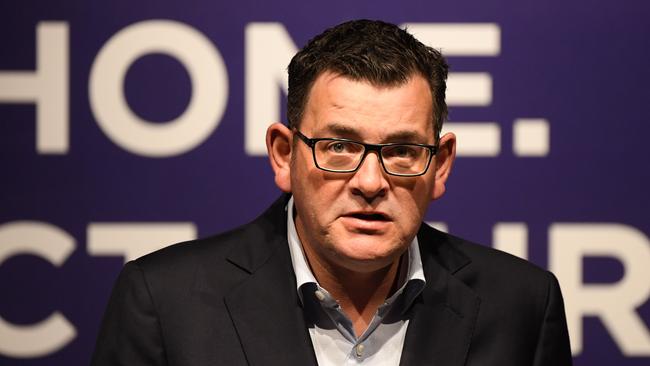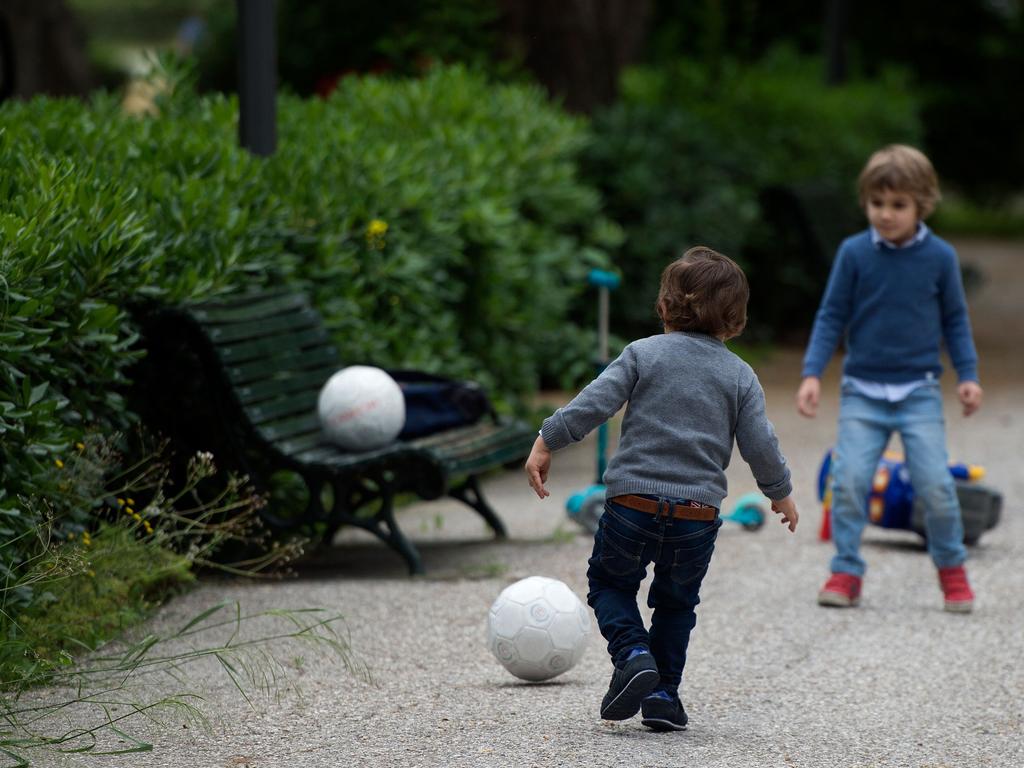Rebel schools push classroom comeback
A powerful network of Victorian private schools demands the discretion to reopen in a direct challenge to the Premier.

A powerful network of Victorian private schools has demanded the discretion to reopen campuses in regions largely unaffected by the coronavirus, in a direct challenge to Premier Daniel Andrews’s hardline stance on school closures.
Ecumenical Schools Australia, which represents 19 mostly regional campuses and more than 17,000 students, called on the state Labor government to endorse schools to conduct their own risk analysis on reopening.
This would allow principals to open doors “as soon as possible’’ in areas where the risk of coronavirus infection was deemed to be low.
The demand came as federal Education Minister Dan Tehan wrote to all non-government schools offering $3.2bn in incentives to open campuses immediately and return to at least 50 per cent classroom teaching before the end of May.
Prime Minister Scott Morrison remains at loggerheads with the Queensland, NSW and Victorian governments, which are refusing a full reopening of schools despite commonwealth medical advice that they should.
There are an estimated 580,000 Catholic school students and 480,000 students from independent schools across those three states alone.
If Mr Tehan’s offer is accepted, almost 1.4 million students across the country could be heading back to school sooner than students in public schools, who are being forced to remain at home under some state and territory-imposed closures.
Students in the state systems would potentially be left months behind in learning by not following suit with non-government schools that move to reopen with the financial incentives offered by the federal government.
The provocative move to sidestep recalcitrant states follows warnings from the federal Education Department that students would suffer significant falls in literacy and numeracy under extended school closures of up to six months. Some disadvantaged children would be at risk of dropping out of the education system.
While Victoria has directed schools to commit to providing remote learning for the remainder of term two, ESA general manager Stephen Higgs said principals wanted the government to consider individual circumstances.
“Just as Victoria has been saying it’s appropriate to operate according to its own health advice, which has been different to the other states, we think that within Victoria there are big differences between the regions and it’s appropriate that independent schools be given the discretion to look at whether it’s safe to start planning for a return to the classroom,” Mr Higgs said.
“This is being driven by the fact that many regional areas are not experiencing any significant level of the COVID disease.”
Most of regional Victoria, except for the Geelong area, has reported low levels of COVID-19, with 35 local government areas having fewer than 10 cases.
Ballarat, where ESA schools Ballarat Grammar and Ballarat Clarendon College are based, educating a combined 3000 students, has not recorded a new case of COVID-19 for close to four weeks.
Other ESA schools include The Geelong College, Shepparton’s Goulburn Valley Grammar School and The Hamilton and Alexandra College in the state’s west.
Victoria remains at odds with the bulk of the nation on school closures. South Australia and Western Australia are encouraging students back to class and NSW is planning for a staged return over coming weeks.
Queensland, which has not committed to a decision on reopening schools until after May 15, is being lobbied by the independent sector to have Year 11 and 12 students return immediately.
Despite conceding that Victoria’s COVID-19 numbers had stabilised, Mr Andrews said on Tuesday that parents should assume remote learning would continue for the rest of term two, which runs until the end of June.
The state’s chief health adviser, Brett Sutton, suggested on Monday that he was “open to opening schools before the end of the term”. However, Mr Andrews insisted that he had not yet indicated that schools should reopen early. “The notion that just because some people in Canberra say so, that we can just flick a switch and all the schools will be open, I just don’t think that would happen,” Mr Andrews said.
Most independent and Catholic schools have complied with the state’s stance on schooling, despite it being in conflict with the advice of the Australian Health Protection Principal Committee. It is understood that schools, while having autonomy to make decisions, are reluctant to diverge from the state, particularly after the small independent Fitzroy Community School was publicly labelled “reckless” last week by Education Minister James Merlino over its decision to reopen.
Mr Higgs, a former principal of Ballarat Grammar, said schools would need time to prepare their communities for a return to face-to-face learning and would like the discretion “to make that decision now’’. “And hopefully in the second half of May some schools would be in a position to reopen,” he said.
Mr Higgs said schools had done a tremendous job preparing students for learning remotely. While it appeared to be working well, “it would never be a full equivalent of the personalised attention students get in the physical classroom,” he said.
Mr Andrews said private schools’ decisions about reopening were “entirely a matter for them”.
Mr Tehan said the federal government payments were intended to encourage Catholic and independent schools to open for teaching in the classroom by the end of May.
The Education Minister said research released on Monday by the federal government clearly showed it was “more important than ever to get our children back into the classroom and being taught by teachers in the classroom’’.
In the letter from Mr Tehan, Catholic and independent schools were asked to apply to access 25 per cent of their total annual funding, to be brought forward to May and June.
The letter to the schools explained that approved authorities could have 25 per cent of their total annual recurrent funding paid.
This would be worth an estimated $1.6bn for the Catholic schools and $1.4bn of the independent sector, which has been calling for assistance over fears students would drop out of the system due to financial strain.
The schools would need to respond to the offer by Friday.
Government sources openly acknowledged that it was also designed to pressure state governments to lift their school bans.
“This would be a wonderful national achievement if it was to occur,” Mr Tehan said.
“We want to incentivise the non-government schools to play their part in achieving this.”







To join the conversation, please log in. Don't have an account? Register
Join the conversation, you are commenting as Logout